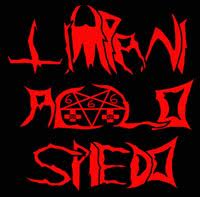Visualizzazioni post:1417
Idaslet: The Legacy of the Vikings Turning to Christianity
Peeling back the Viking-folk top layer from Idaslet’s music reveals a rich baroque composition intertwined with romantic imagery. In their own words: “Let’s revive Dante Alighieri and a random Viking warrior, put them in a room and let them play with us”.
For the band’s information, social media links, contacts, records, and merchandise find it here LINK
The Viking legacy explored in their latest work, “Nu Skrider Dagen Under“, dives into the deeper historical meaning of the transformation of Nordic kingdoms towards Christianity. This era saw churches being erected on ancient king’s mounds, replacing pagan wooden temples. Pagan rites melded into new rituals, and the church choir echoed with the voices of warriors devoted to Valhalla.
Before delving into their music, here’s our summary in less than 5 minutes:
The Rehearsal Space
Picture this: It’s a foggy end-of-February day around 5 pm, and darkness descends. We find ourselves in the rehearsal room of Idaslet at the old crematory of the psychiatric hospital of Østerbro in Copenhagen. There’s a decadent melancholy in the air, a delicate embrace inviting existential reckoning.
Kristian, accordion and voice, leads us through the condemned building, revealing a room that once served as a dissection and/or body preparation area. The tiles on the walls that witnessed the graphic history of the locale now hold a solemn vigil over the groups playroom, guarding the cherished items of theirs and other bands.
In their rehearsal space, we discover shared instruments, including the drum set of Kaiju, a captivating Danish prog-metal band with existential themes and a touch of death metal.
Amidst the charm collection, a signed Dizzy Mizz Lizzy poster catches our eye—the undeniable giants of rock-grunge in Denmark. In the video, they mention other bands that inspire them, including Rhapsody Of Fire, Blind Guardian, Sabaton, Korpiklaani, Gogol Bordello, and SvartSot.
With a King beer in hand, a classic Danish pilsner, we welcome Magnus, the growling voice of the band, for the interview.
The Interview with Idaslet for “Nu Skrider Dagen Under”
We focus on presenting the band and their current LPs, “Lurernes Glammen” (2020) and “Nu Skrider Dagen Under” (2023), with a primary emphasis on their latest work released in December 2023.
The Artwork
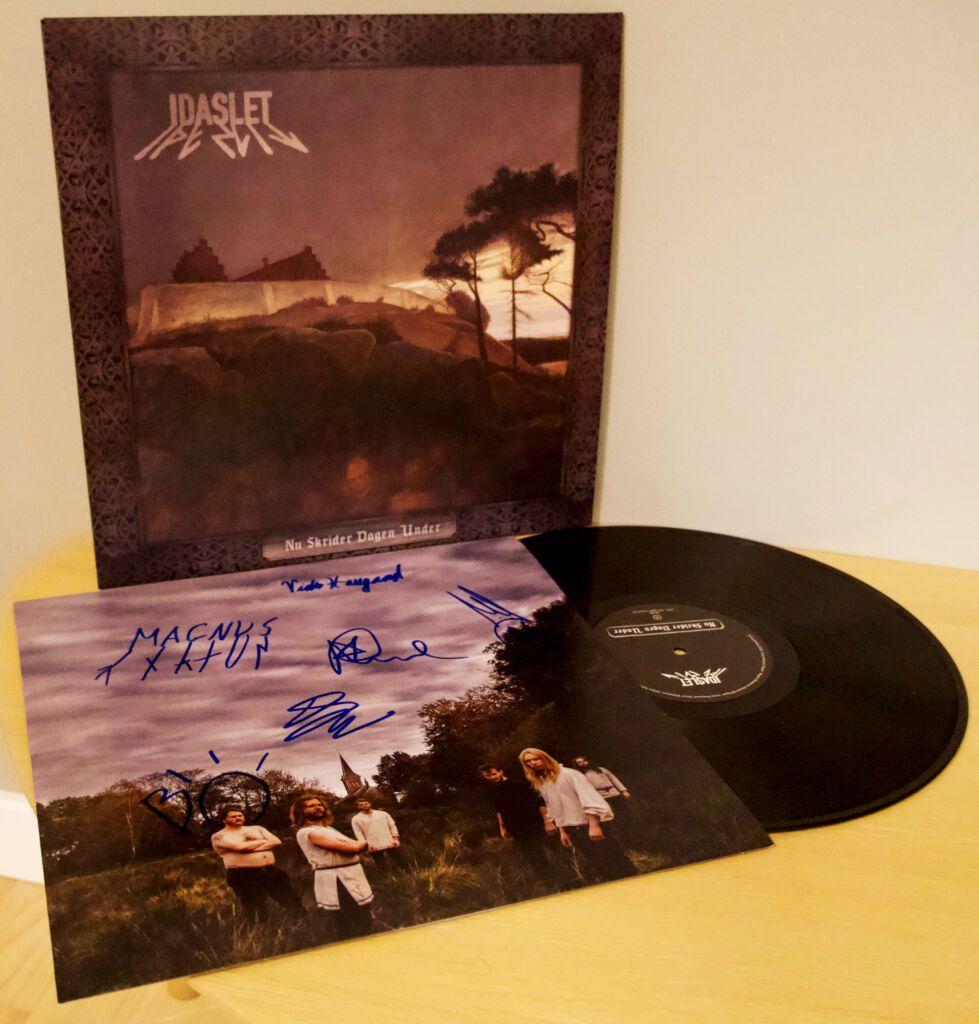
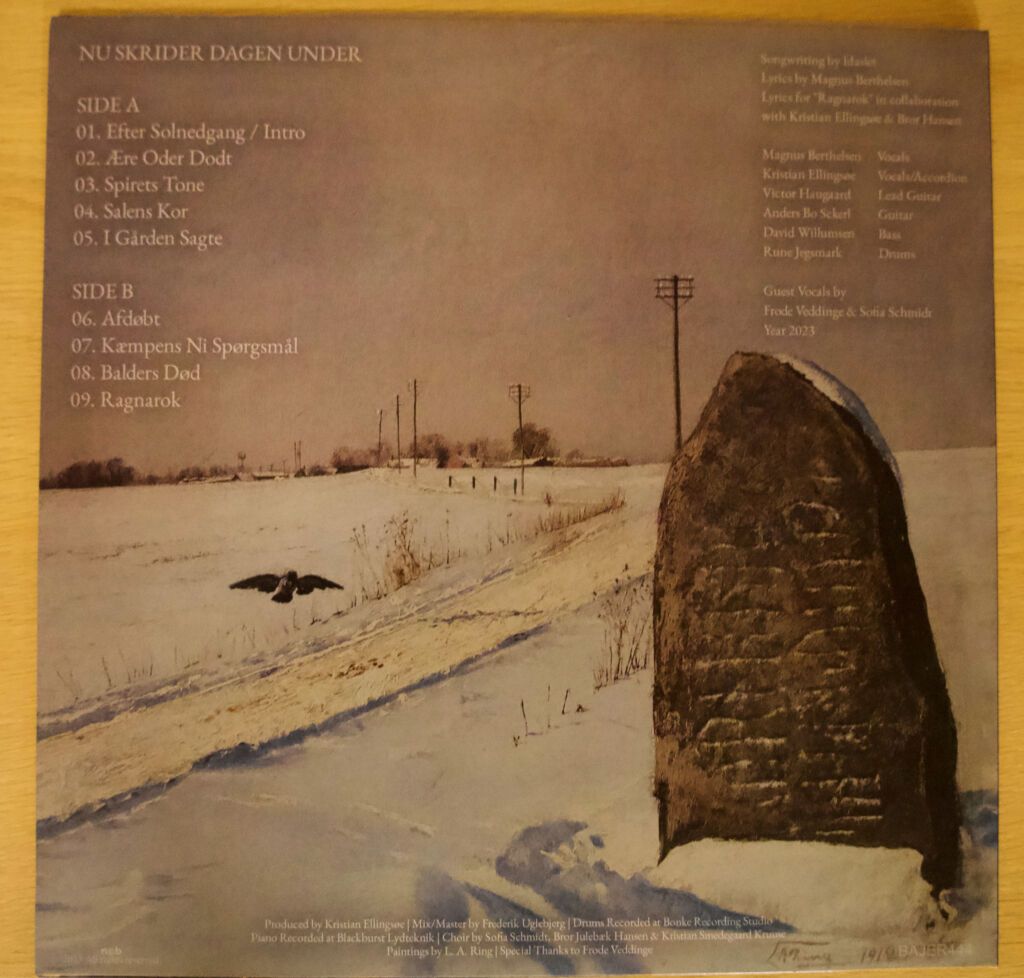
At minute 4.00, we dig into the artwork of “Nu Skrider Dagen Under”, consisting of two paintings by Danish Painter L. A. Ring (1854-1933). Known for embracing Nordic existentialism and deep psychological symbolism, Ring’s style merges classic Italian art with the modernity of contemporary French artists.
It is intriguing how L. A. Ring’s subjects often depict the passage of a threshold, such as the road present in both the artwork of the LP. Notably, old Nordic symbols like gravestones with runic inscriptions, ravens, and Christian hallmarks like the ancient Christian church (Melby Kirke) and the graveyard with mummified bodies seamlessly match the band’s interest in narrating the Vikings’ transition to Christian culture.
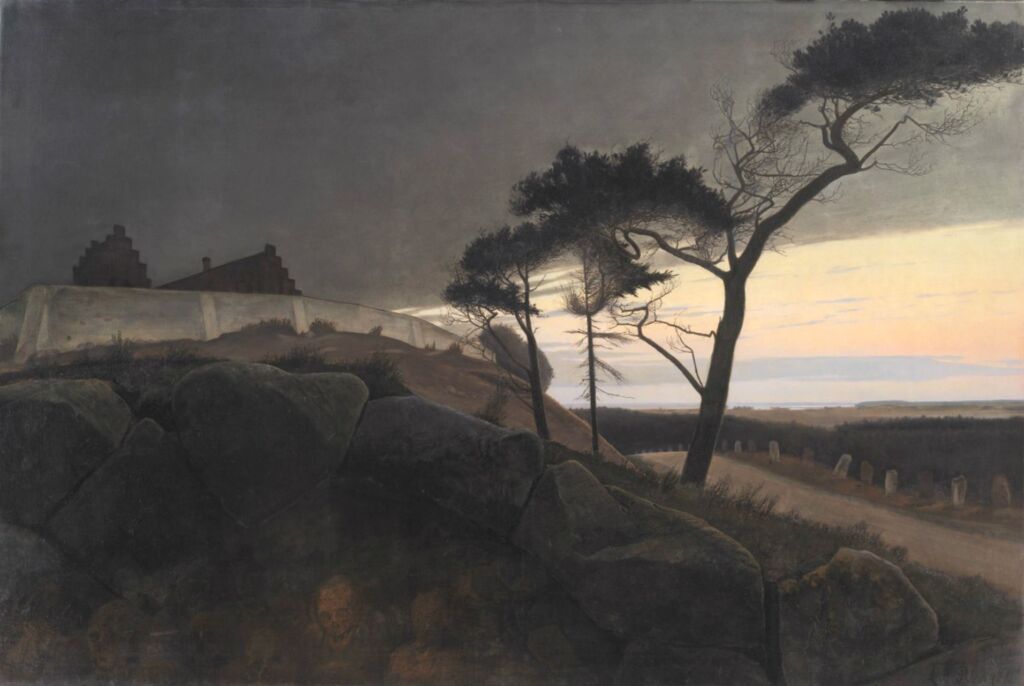
“Nu skrider Dagen under” contents and flow
As explained at minute 26.45, there is a parallelism between the album and the choice of artwork. Although each song tells a separate story, together they follow the divide between ancient and modern times, mirroring the Melby Kirke painting. From the sky of the old gods and Viking tales (Ære Oder Dodt), the journey moves toward the church bell (Spirets Tone), then to the church choir (Salens Kor), and to the graveyard painted under the church (I Gården Sagte). Transitioning to the B side of the album, the narrative turns back to the Viking cult with the fields visible in the distance at the right corner, suggesting a metaphor for Idaslet (the fighting ground) of Valhalla where the dead heroes train for the brutal battles of Ragnarok.
This passage is navigated through the songs Afdød (unbaptized, unsainted), the ancient Nordic folk inspired Kæmpens Ni Spørgsmål, and Balder Død, concluding with Ragnarok. The theme of mortality is encapsulated in the album title “Nu skrider Dagen under”, part of the painting title “Nu skrider Dagen under, og Natten vælder ud”. This phrase was used for the old night watch getting ready to work, signifying “Now the day is ending, and the night is closing upon us”
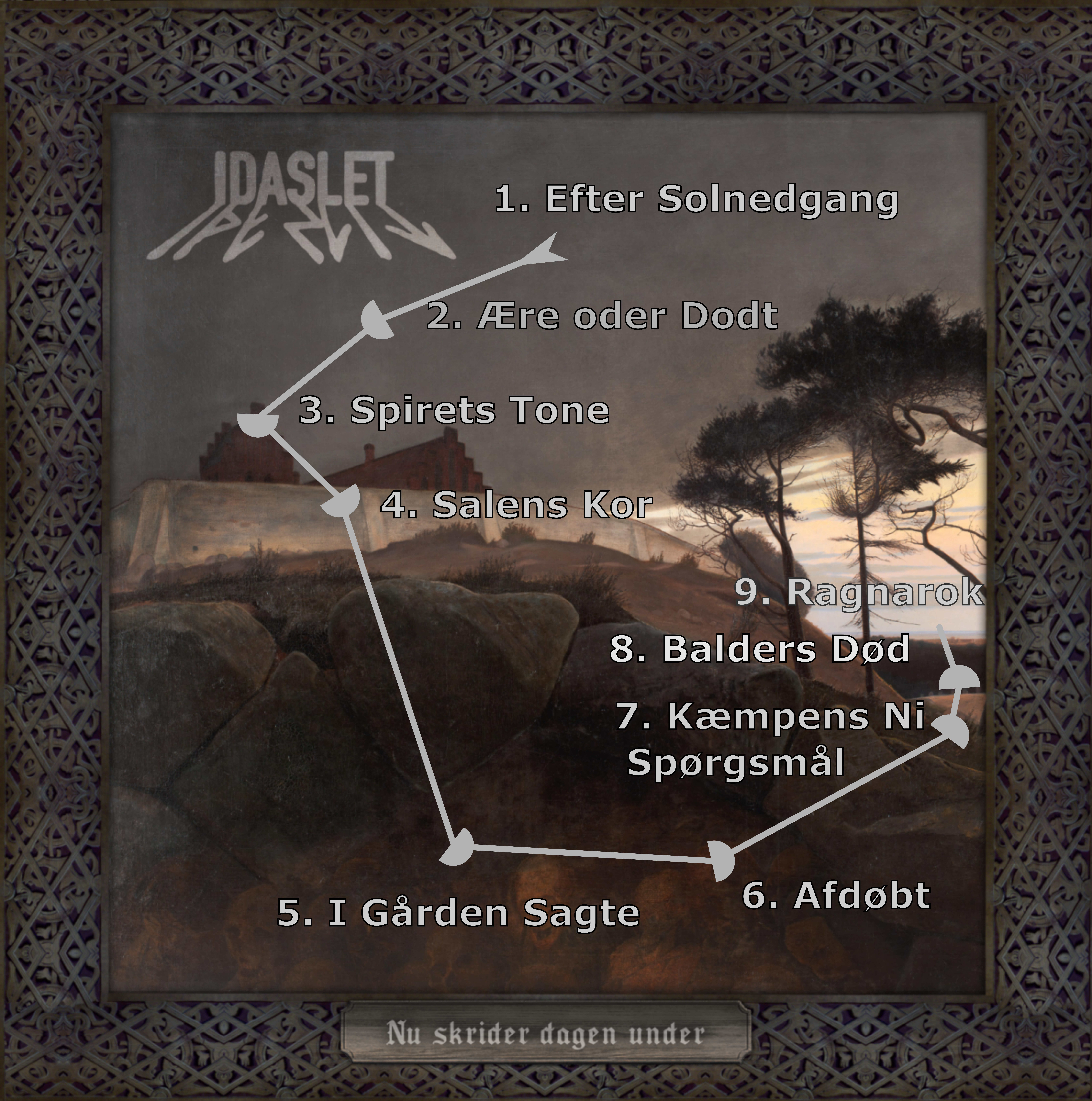
Style and collaborations
Idaslet is not merely another folk-metal band; they are baroque and experimental. Complex and almost overworked compositions are woven over the folk foundation of each song, featuring continuous changes of mood and sounds. This baroque style embraces the gothic and decadent inspiration of their narrative, with a continuous nod to the Romantic and Renaissance era, as evident in the single “Balder Død”, a funeral ode to Odin’s son framed in a romantic Renaissance depiction of a Roman soldier’s death.
This video, performed with the voice of Sofia Schmidt (Etheral Kingdoms, solist, other) who can sing up to a soprano voice, embraces their theatrical approach to music.
A standout song that we discuss in detail, and for which we offer an improvisation of the English translation of a verse (end of the video), is “Kæmpens Ni Spørgsmål” (the nine riddles of the giant). This song is an adaptation of the troubadour poetry in the songs of Frode Veddinge, one of the most famous folk songwriters in Denmark. Frode´s theatrical style, applied to this old-Norse style folk music elicits an immersive atmosphere that provokes the emotions of the listener. The incorporation of ancient Scandinavian troubadour writing with the theatrical metal approach makes this song, verse after verse, a true pearl to discover; even if at first listening it may appear as a humble track squeezed between the rococo pillars Afdøbt and Balders Død.
Entering the journey of a Christian church built on the ground of an ancient Viking burial mound, there are no words to waste—just the feeling of stunning awe. Immerse yourself in the decadent and romantic stupor inspired by this album.
The line up
Drums – Rune Jegsmark
Guitar – Anders Bo Sckerl Hansen
Accordion & Clean Vocal – Kristian Ellingsøe
Lead Guitar – Victor Haugaard
Vocals – Magnus Berthelsen
Bass – David John Willumsen
Acknowledgment
Thanks to Kristian and Magnus for be so available for this interview, a thanks to Cody Cleveland for helping with the English version.




